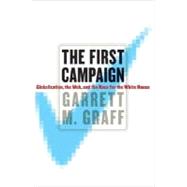
Note: Supplemental materials are not guaranteed with Rental or Used book purchases.
Purchase Benefits
What is included with this book?
| Introduction: A Period of Consequences | p. 3 |
| The Last Campaign | p. 19 |
| The Rise of the Anxious Class | p. 21 |
| Google and People-Powered Politics | p. 50 |
| The Democrats Reboot | p. 74 |
| 2008: The Lay of the Land | p. 90 |
| The First Campaign | p. 123 |
| Investing in Twenty-first-Century Technology | p. 125 |
| Educating and Recruiting Twenty-first-Century Workers | p. 154 |
| Caring for Twenty-first-Century Workers | p. 189 |
| Powering a Twenty-first-Century Economy | p. 212 |
| Web 2.0 Meets Campaigning 3.0 | p. 247 |
| Conclusion: Our Collective Future | p. 277 |
| Notes | p. 293 |
| Acknowledgments | p. 305 |
| Index | p. 307 |
| Table of Contents provided by Ingram. All Rights Reserved. |
The New copy of this book will include any supplemental materials advertised. Please check the title of the book to determine if it should include any access cards, study guides, lab manuals, CDs, etc.
The Used, Rental and eBook copies of this book are not guaranteed to include any supplemental materials. Typically, only the book itself is included. This is true even if the title states it includes any access cards, study guides, lab manuals, CDs, etc.
Excerpted from The First Campaign: Globalization, the Web, and the Race for the White House by Garrett M. Graff
All rights reserved by the original copyright owners. Excerpts are provided for display purposes only and may not be reproduced, reprinted or distributed without the written permission of the publisher.